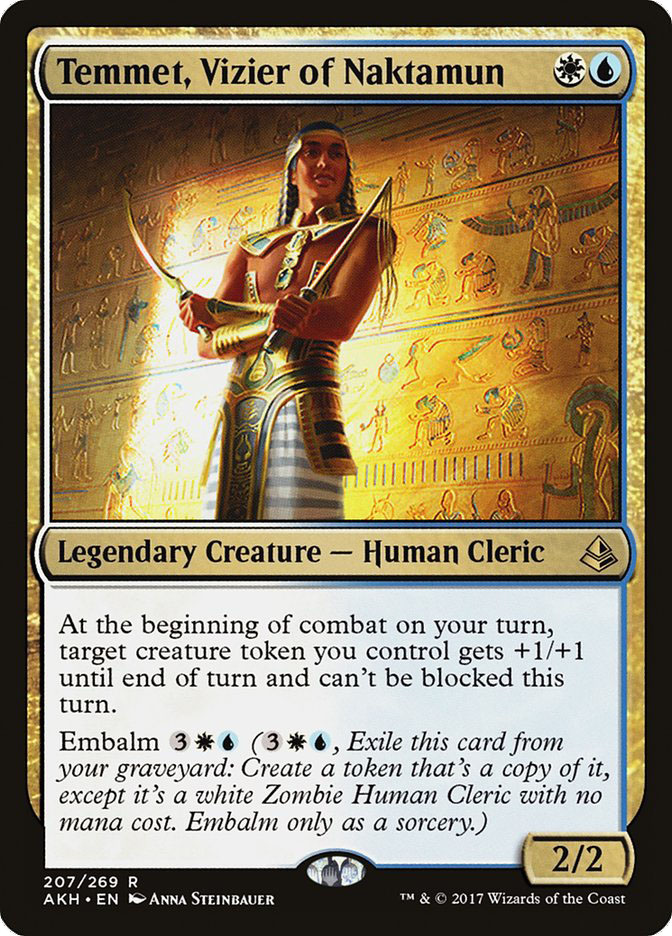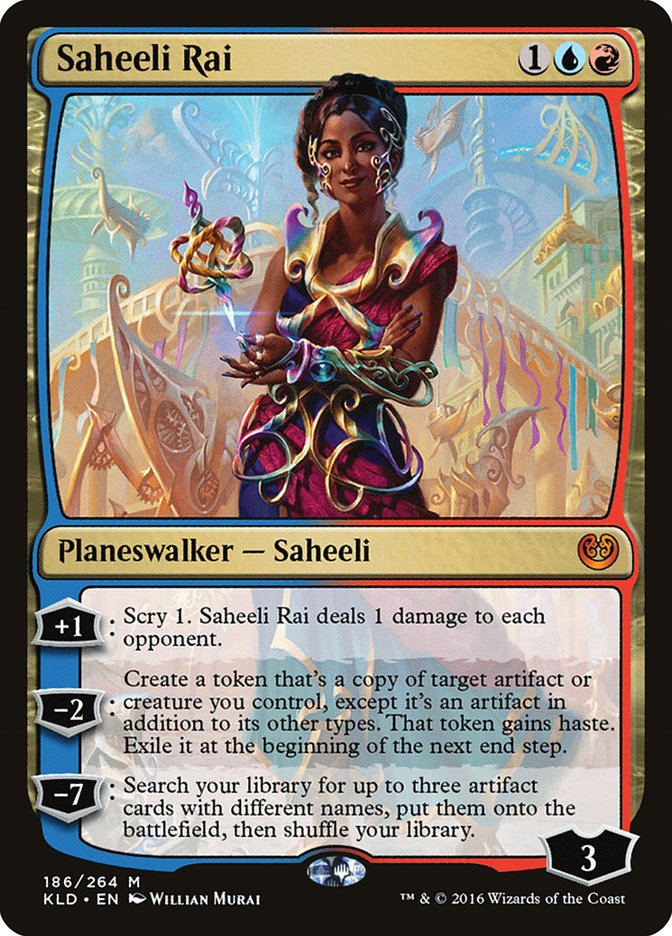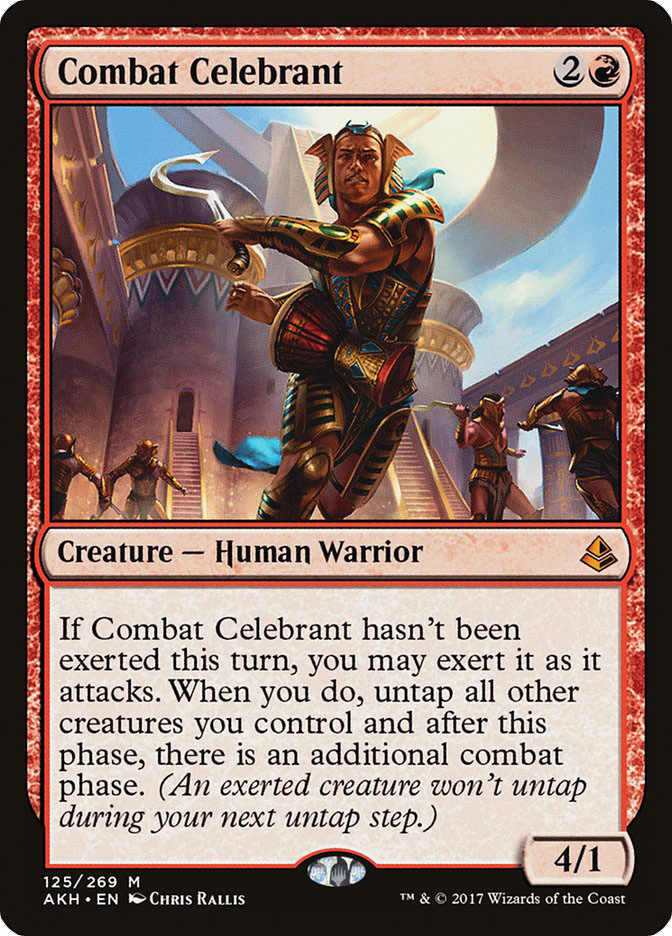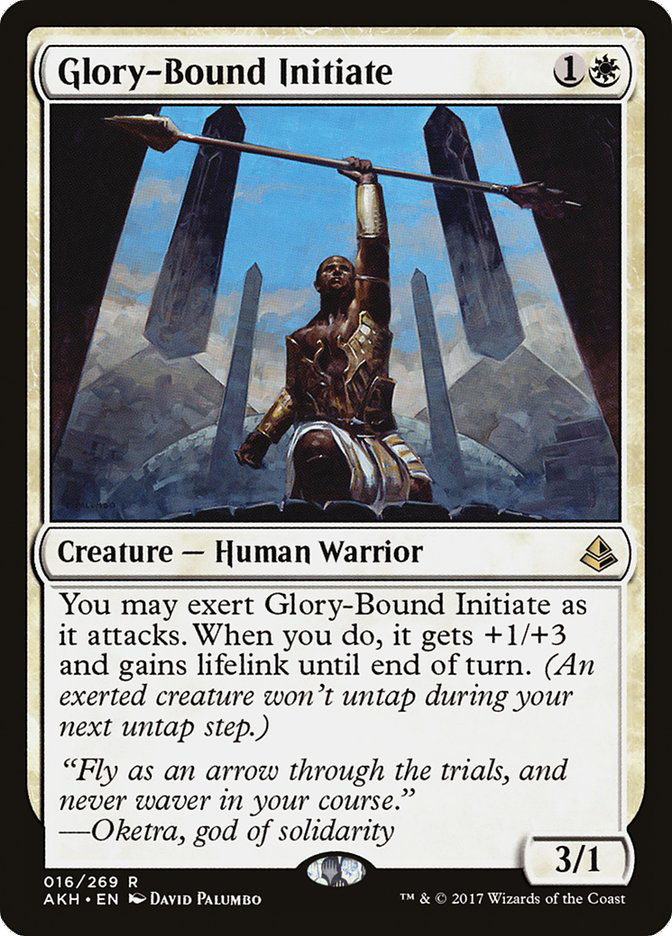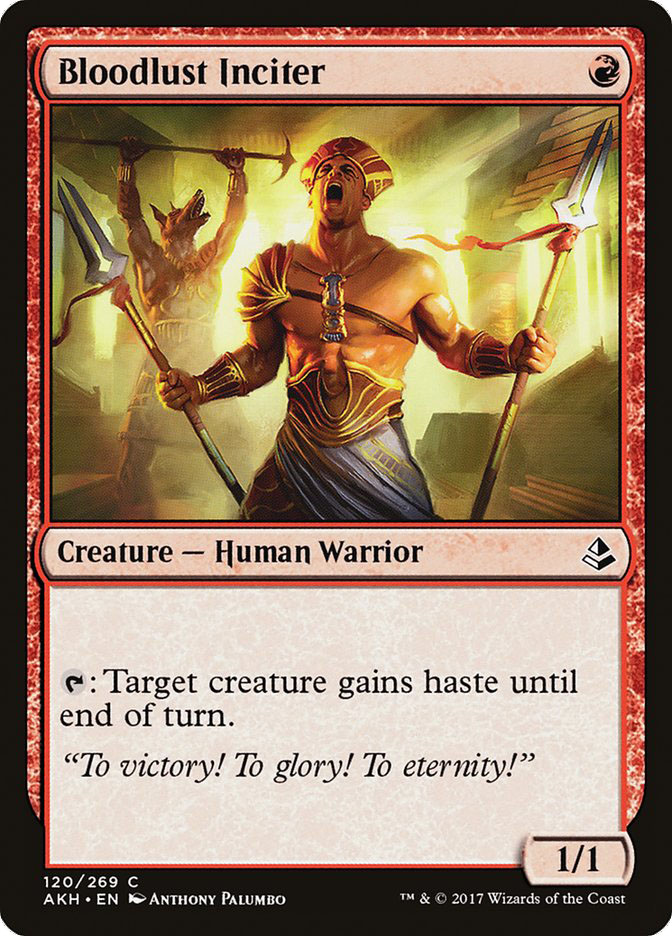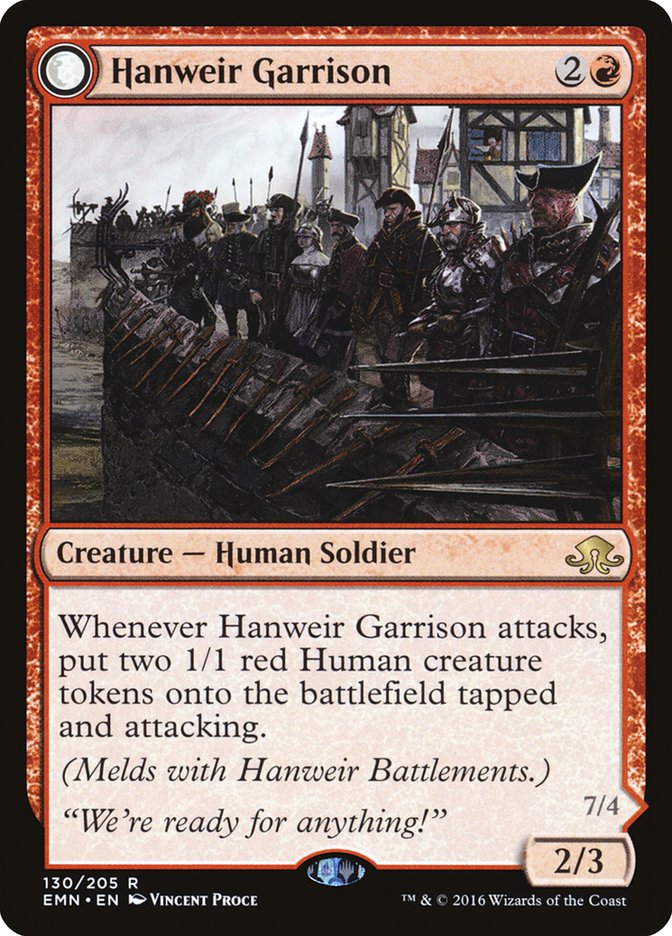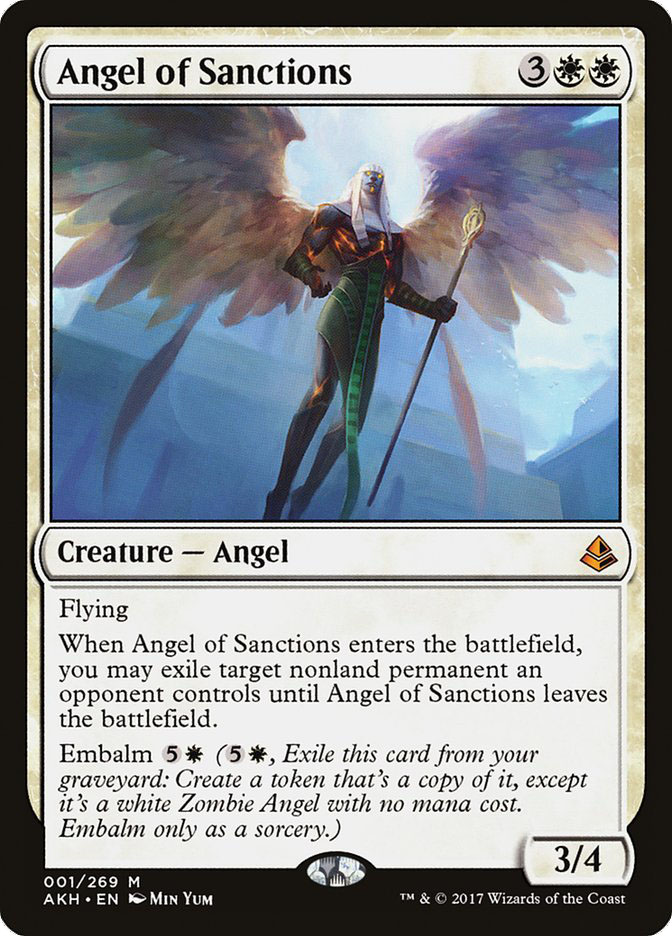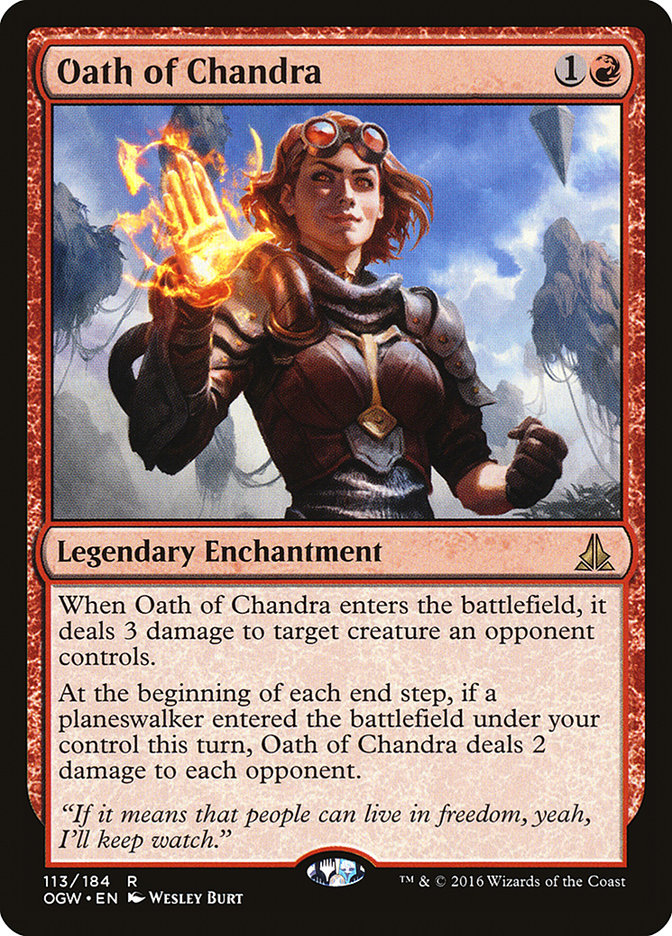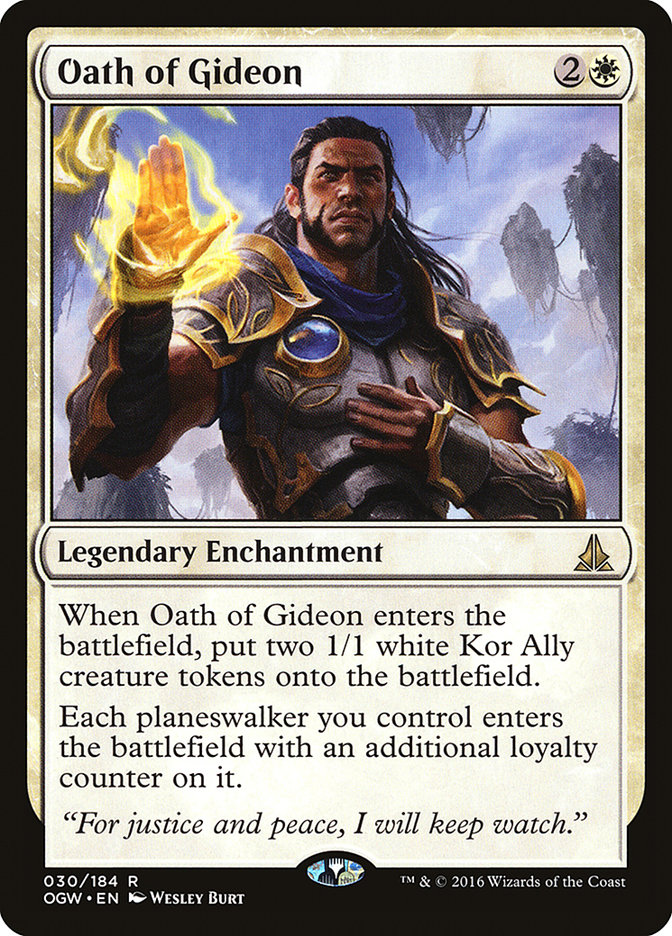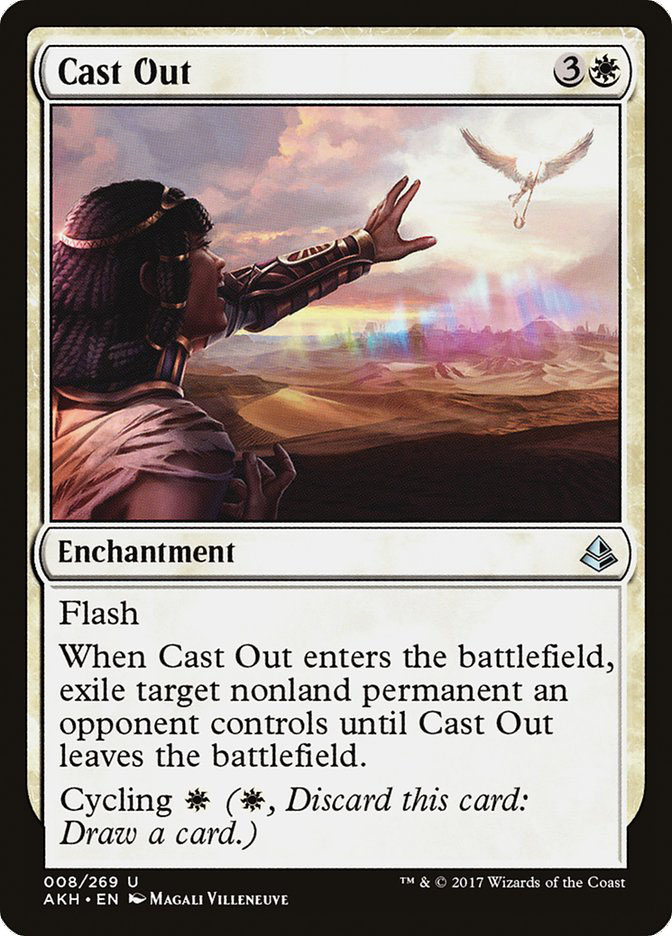Last week, we started looking into the exciting potential behind one of the coolest entries from Amonkhet, the legendary creature Temmet, Vizier of Naktamun. This little 2/2 has a lot going on, not only because it provides a relevant, on-curve body and unconditional evasion for a conditional target but also because it can return itself from the dead and target itself with its block-dodging ability.
Combined, this makes Temmet, Vizier of Naktamun a bit of a wild card to build around. Marginal tokens become playable, even lethal, and unwinnable situations become pressuring races. Two-drops don’t tend to have as much impact on Standard as they used to, but I’d argue that, with the right builds, Temmet, Vizier of Naktamun has the goods to make it a consideration.
Creatures (12)
- 2 Ayli, Eternal Pilgrim
- 4 Thraben Inspector
- 2 Spell Queller
- 2 Temmet, Vizier of Naktamun
- 2 Aven Wind Guide
Planeswalkers (4)
Lands (27)
Spells (17)
Sideboard

We’ve covered the Esper token approach a couple of times in the last few months, first without Temmet, Vizier of Naktamun and then with. Hidden Stockpile was at the center of both plans, and this is still a comfortable place to start when black and white work together towards a token strategy. Hidden Stockpile provides a constant stream of tokens for wide pressure, which translates into inevitability with Temmet, Vizier of Naktamun, a new and exciting approach to the small-creature strategy.
After testing, and enjoying, the Esper version, it felt like a stretch on the theme. Temmet, Vizier of Naktamun seems at its strongest when it’s giving a surprise token evasive abilities. Moreover, a token with high power benefits the most from evasion.
That’s when I got the idea to push the token concept out a bit to include a niche token maker that, since the banning of a certain Cat, has seen only occasional inclusion in top-level decks: Saheeli Rai.
Tokens (and, really, Standard cards in general) aren’t as singularly powerful as they used to be; when the tokens Standard ostensibly gives us fail, we’ll make our own. Saheeli Rai’s -2 ability creates a token of any artifact or creature I control, meaning the new copy is eligible for any token-related shenanigans I can toss at it, from Anointer Priest triggering to, you guessed it, Temmet, Vizier of Naktamun being able to target it. The haste lets us get the jump on our opponent; regardless of what we copy, there’s a good chance it’s getting through and disrupting your opponent’s plan, so long as we build it correctly.
Exert is a fascinating Limited mechanic, using time as a resource to make your individual cards count for more than their face value, but only occasionally; think a less dramatic Chronatog. If you’re making tokens for just one turn, the exert penalty is effectively eliminated; you can burn your creature’s candle from both ends without the irritating repercussion of losing use of it for a turn. Where possible, haste means the creature will be crashing (and exerting) immediately for the added benefit it provides.
Leveraging a deck that uses these benefits is a bit of a trick, as there are a lot of moving parts to juggle. Let’s do what we can to filter the list down to a first draft.
Creatures (20)
- 3 Thraben Inspector
- 2 Hanweir Garrison
- 2 Glorybringer
- 3 Temmet, Vizier of Naktamun
- 1 Combat Celebrant
- 4 Glory-Bound Initiate
- 2 Angel of Sanctions
- 3 Bloodlust Inciter
Planeswalkers (7)
Lands (26)
Spells (7)

This deck looks, and plays, completely differently from the deck we talked about last week. We’re no longer building up a critical mass of tokens to protect us and sending a handful in at a time, one being occasionally unblocked. Instead, we’re digging deep with the Saheeli Rai token interactions, and the more we can leverage that, the more likely it is that we’ll be able to create fun, undeniable combat steps.
Creatures
Lifted from Craig Wescoe’s Pro Tour Amonkhet deck, these four cards total over a third of the deck’s nonland cards. Together, they let Craig put up some vicious attacks by way of a turn 3 Hanweir Garrison, granted haste by Bloodlust Inciter. Haste gives the fairly innocuous Hanweir Garrison real teeth, a veritable Hero of Bladehold that’s easier and cheaper to cast. Thraben Inspector, while being a reasonable card in most matchups, gets the benefit here of being copied by Saheeli Rai for an extra card draw. You might laugh, but sometimes, you just need to look at one more card to bring yourself out of a sticky situation. Glory-Bound Initiate works well with Bloodlust Inciter, giving you a one-two punch and a nice boost of life to boot.
Temmet, Vizier of Naktamun plays a more vital role than it did in the Esper deck, providing a true avenue to victory and excellent long-game reach, both reanimating itself and giving whatever survived your opponent’s removal an opportunity to crash back. Four copies is still too many without large amounts of selection, e.g. Cathartic Reunion, but this deck is doing too many things to mess with lots of card draw and idle maneuvering.
These are the deck’s high-dollar haymakers; all of them benefit from haste, and Glorybringer even gives it to itself, no help required. Combat Celebrant, perhaps the most conditional of the group, is the right creature at the right time, putting an otherwise respectable combat step into overdrive. Remember that Temmet, Vizier of Naktamun’s +1/+1 and “can’t be blocked trigger” happens at the beginning of each combat on your turn; attacking with a token during a second (or third) combat phase will make the token larger each time, providing a relevant return on your deck investment in the form of damage that can’t be blocked.
Angel of Sanctions can eliminate anything from an Aetherworks Marvel to its produced Ulamog, the Ceaseless Hunger. It’s out of removal range of Magma Spray and Fatal Push, with or without revolt, and even if it does meet a horrible end, it can come back the next turn with embalm. Then, Temmet can (perhaps redundantly, given Angel of Sanction’s flying) make it unblockable and even tougher to kill, block, or outrace. Glorybringer loves Saheeli Rai, as two copies let you take down one beefy creature or two, all while smacking a player or planeswalker for eight damage during the combat step.
Spells
This deck features more creatures than spells, but the spells are essential to making the plan work.
These are the two Oaths that, overall, I’ve been most happy with in testing. Oath of Nissa is an excellent five-color planeswalker “Super Friends” enabler, on top of frequently replacing itself, and Oath of Jace and Oath of Liliana are a bit too clumsy, even in their best decks, to really leverage effectively, in my opinion. Oath of Chandra, with its low cost and immediately relevant damaging ability, blasts most of the format’s two-drops (Grim Flayer without delirium, Sylvan Advocate, Walking Ballista) and then gives a follow-up later in the game for the deck’s seven planeswalker spells. This incidental damage means your unblockable creatures provide even more pressure, making our opponent more likely to play defensively.
Oath of Gideon was a critical player in the last deck, mostly because it provided two tokens for Temmet, Vizier of Naktamun and kept Gideon, Ally of Zendikar from immediately hitting the bin after creating an emblem. Here, though, it provides a critical field of blockers and makes the deck’s two planeswalkers much more resilient and relevant.
Saheeli Rai’s +1 is great and all, but it’s slow and mostly non-impactful. With Oath of Gideon, the planeswalker has blockers and can -2 twice without having to plus at all, keeping the petal pushed to the floor. For the second planeswalker, Nahiri the Harbinger, she can also -2 twice and survive, or +2 twice, ultimate, and survive. Speaking of which, Nahiri, the Harbinger has fallen out of favor in Standard lately, but she’s still one of my favorite planeswalkers in Standard. Her +2 discards extras of Saheeli Rai and Temmet, Vizier of Naktamun, and her -2 can kill a tapped Aetherworks Marvel, Dynavolt Tower, or any problematic creature that just engaged in combat. With her -8, she can fetch the deck’s biggest bruiser and send it sideways; with Saheeli Rai out, you can copy it (a copy which will also have haste). She really is an army at the ready if she can survive to see it.
Lands
The deck is an odd combination of Jeskai lands and required costs. Here, untapped lands are fairly important, so I’ve emphasized Plains, Port Town, and Inspiring Vantage and Spirebluff Canal. The deck has a fairly low demand on blue mana, to be honest, so the deck features no source that produces only that color (read: Island). 26 lands is my standard these days if the deck has a six-drop in it, and so far, I haven’t been disappointed with that number. The one utility land, Hanweir Battlements, pairs with the Garrison, of course, and any exert creature. Holding Combat Celebrant with this and four other lands up puts you entirely in control of your combat step.
Sideboard
While I wasn’t originally convinced, Magma Spray is the removal of choice for red-based decks, not Incendiary Flow, Shock, or even Fiery Temper. Magma Spray gets rid of problem creatures like Scrapheap Scrounger, Dread Wanderer, and even on-time removal for Servant of the Conduit or Rogue Refiner. Release the Gremlins is aligned with the deck’s plan, even if it just breaks one artifact. Manic Vandal is actually worse, as the 2/2 Gremlin can be augmented by Temmet, Vizier of Naktamun.
Vizier of Many Faces is this format’s Clone variant, but being able to cast it from the graveyard is particularly exciting. It’s important to note, though, that whatever you reanimate it as, it does not carry its mana cost, so Fatal Push still kills it. Still, the ability to recover your opponent’s best creature and then attack unblocked with it is enough to merit a try.
Cast Out supplements Angel of Sanctions (and its embalmed version) as a way to handle planeswalkers and other hard-to-target permanents. Devoted Crop-Mate is a great way to rebuy Glory-Bound Initiate; Temmet, Vizier of Naktamun; or both if you make a copy with Saheeli Rai. Anointer Priest is a great blocker, and if I have it right, it counts itself when it embalms (as it doesn’t say “another” creature token). It’s easy to resurrect, too; embalm is only helpful if you can reasonably reanimate it.
I’ve tried both the Esper and Jeskai list extensively and, while one isn’t necessarily better than the other, as they both contain strong cards, they play incredibly differently and have different strengths and weaknesses. The Esper deck is perfect for a passive, more control-oriented player, where you’re comfortable sitting back, optimizing your lines of play, and knowing when to turn the corner and go on the offensive. The Jeskai deck, on the other hand, is about carefully crafting a combat step, understanding your opponent’s deck, finding the weakness, and flipping the deck over once you’ve got your pieces ready. The deck wins all of a sudden, or it slowly gets outpaced with higher-quality cards. Nahiri, the Harbinger is a critical component to the deck, and the incidental damage provided by unblockable tokens and haste creatures lets you set up the final alpha strike.
Temmet, Vizier of Naktamun is way more versatile than I thought when I first set out to make a deck around it, and there’s still way more than I could cover, even in two weeks. What about Architect of the Untamed, with its beastly 6/6 token? Which tokens have you been sneaking by your opponents’ defenses?


